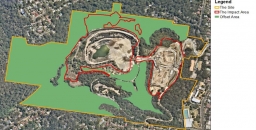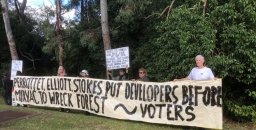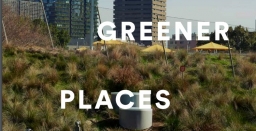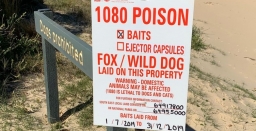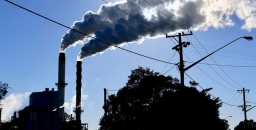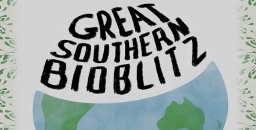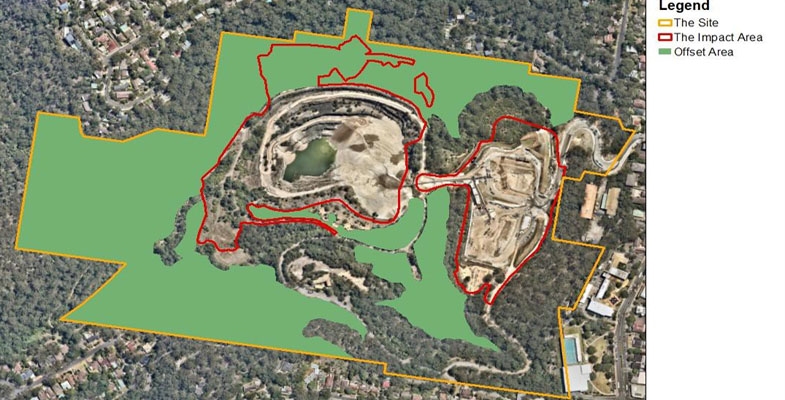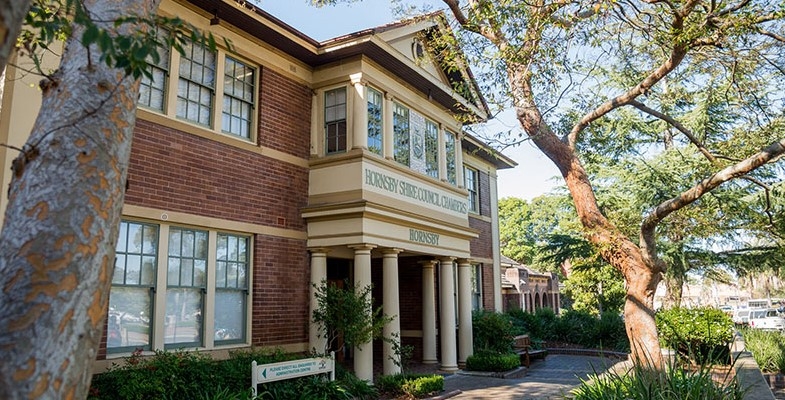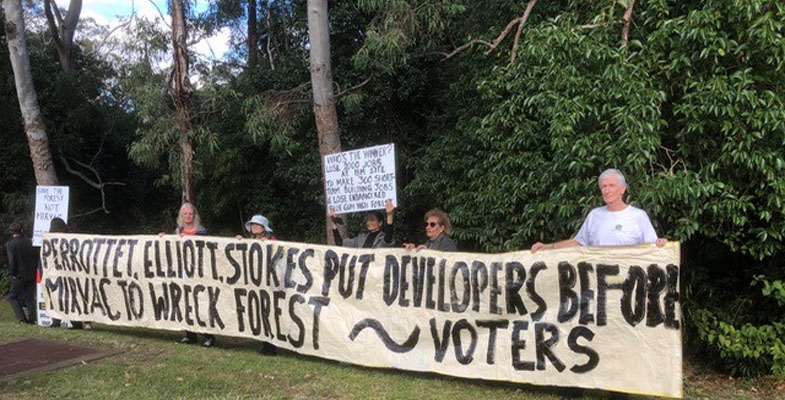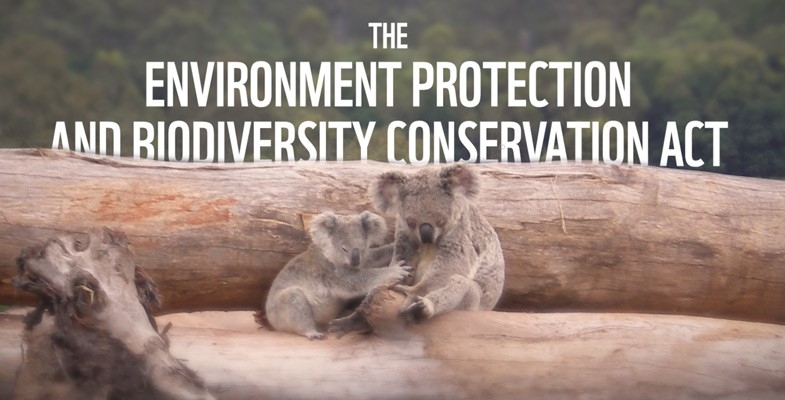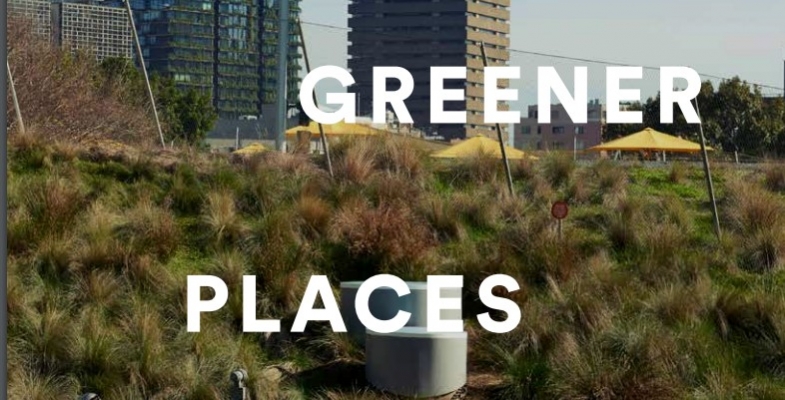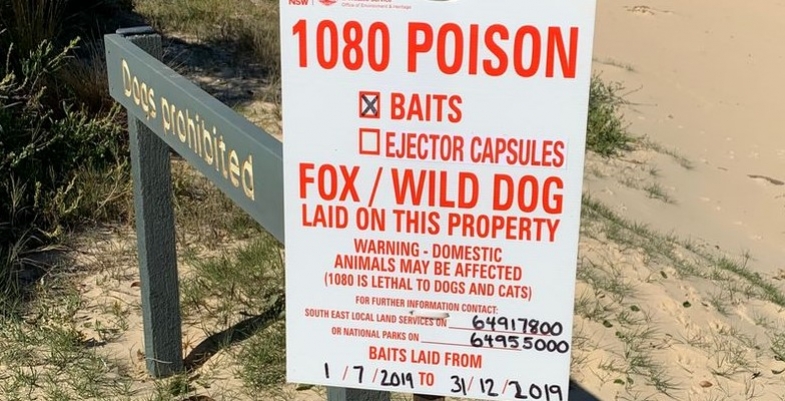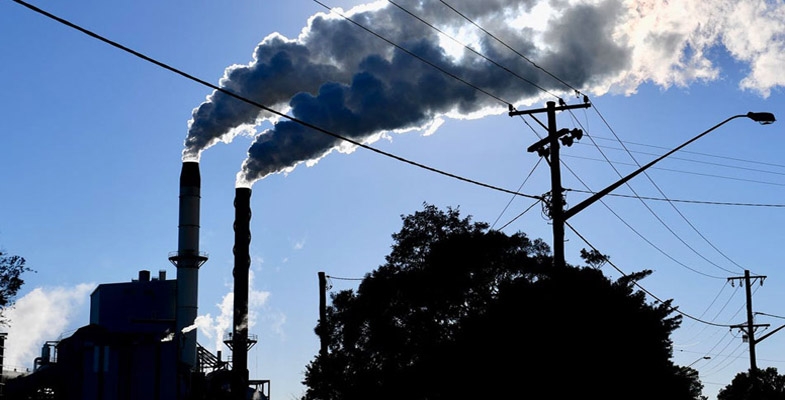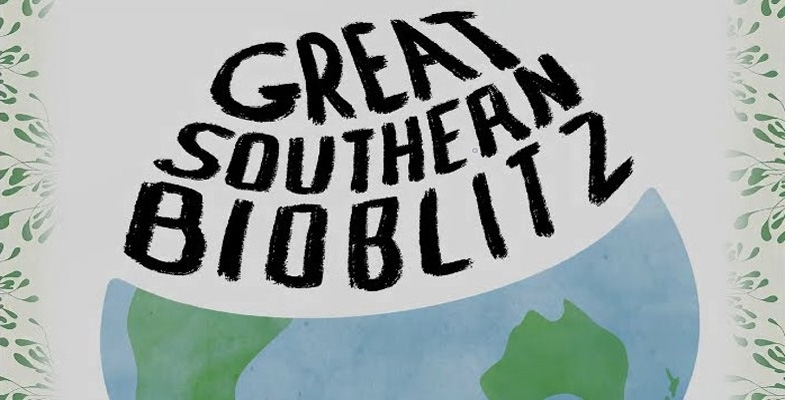STEP Matters 207
- Default
- Title
- Date
- Random
- On 6 May the Sydney North Planning Panel conducted a hearing into Hornsby Council’s DA for the works of Hornsby…Read More
- The Powerful Owl Coalition, of which STEP is a member, presented a submission to a Sydney North Planning Panel on…Read More
- On 14 August some good Hornsby Council decisions were made. Byles Creek Valley Local residents of the Byles Creek Valley…Read More
- An article in the last issue of STEP Matters explained the bad news that the rezoning of the IBM site…Read More
- The EPBC Act that has been in force since 1999 is required to be reviewed every 10 years. The second…Read More
- The NSW Government Architect has released a draft Greener Places Design Guide that is open for comment until 28 August.…Read More
- We are all aware of the impact that the use of 1080 poison has had on the local population of…Read More
- It has been a bad decade for bats. Prior to the emergence of COVID-19, they were already in severe decline…Read More
- Amid the urgent need to slow climate change by cutting greenhouse gas emissions, energy efficiency makes sense. But as Australia’s…Read More
- On Thursday morning 18 June the Friends of Lane Cove National Park held a special celebration at Carter Creek to…Read More
- In April this year an international citizen science bioblitz event was held. Volunteers from all over the world recorded flora…Read More
- A group of researchers from Macquarie University are currently conducting a national online survey that aims to examine people’s connection…Read More
Hornsby Council’s Plan for Rehabilitation of The Quarry – New Documents Released
On 6 May the Sydney North Planning Panel conducted a hearing into Hornsby Council’s DA for the works of Hornsby Quarry. Some individuals and community groups made submissions explaining their serious concerns about some aspects of the proposed works.
The panel found that more information is needed and deferred the application so that the following detail can be completed and made public for further consultation:
- biodiversity offsets package, vegetation management plan (VMP) and habitat creation and enhancement plans
- rehabilitation works around the Powerful Owl breeding pair’s roosting tree
- information about extent of the volcanic diatreme rock face exposure when the filling and creation of the lake and wetland in front of the face have been completed
This information has now been published and further submissions could be made up to 21 August. Another panel hearing will be held in due course.
1. Biodiversity offsets package
The development involves the clearing of some areas and the replanting or restoration of other parts. The development assessment concluded that there will be a residual impact on biodiversity values that need to be offset.
Three options were considered. One option was to use offsets from another site. This is what we were most concerned about. The good news is that priority has been given to offsets that can occur around the quarry and surrounding bushland. This land will be managed as part of the VMP. In-perpetuity protection of the offset areas will be provided by a Voluntary Conservation Agreement which will comprise the offset area and additional lands managed under the VMP.
The Voluntary Conservation Agreement will be co-signed by Hornsby Council and the NSW Biodiversity Conservation Trust.
There is one concern that funding has not been specifically allocated for the VMP so its sufficiency is not certain.
STEP would like to have seen a VMP that is more progressive in recognising the resilience benefits of selecting plants from nearby areas outside Hornsby Shire with similar soils or more likely to cope with changing climate or could have been present before the quarry area was developed but have since disappeared.
2. Powerful Owl protection
A staging plan has been completed highlighting earthworks that will not be undertaken within the recommended Powerful Owl exclusion zones if a breeding pair are occupying a nest on site. Post works habitat creation and appropriate vegetation management practises are also stipulated in the VMP.
The Powerful Owl Coalition is concerned that the language in the documents is not strong enough. Words like ‘should’ are used when the particular actions are a ‘must’.
3. Recognition of the scientific value of the ‘Jurassic’ diatreme rock face
Ian Percival from the Geological Society of Australia toured the site with council officers. In a follow-up letter he explained that the society’s concerns have been addressed. The proposed level of the quarry floor in the redevelopment will be entirely comparable with the exposure more than four decades ago. The letter states:
It is apparent that council now recognises the geoheritage significance of its own ‘Jurassic Park’ (a reference to the known age of the diatreme) which is right in its backyard. As the centrepiece of the redevelopment of the old Hornsby Quarry it will no doubt be a remarkable tourist drawcard if properly protected, allowing public (and restricted research/educational) access with suitable interpretation.
Hornsby Twin Towers Development to Proceed Overlooking Hornsby Park
The Powerful Owl Coalition, of which STEP is a member, presented a submission to a Sydney North Planning Panel on 10 June on the proposed development of two high rise apartment buildings on Peats Ferry Road (the old Pacific Highway). The site overlooks Hornsby Park and is close to the Quarry site and Berowra Valley National Park.
As the buildings will be at the top of the ridge their effective height relative to the valley will be similar to the high rises of Chatswood or Parramatta.
The submission highlighted the risks to birdlife from the development, in particular:
- the risk of birds flying into reflective glass
- disturbance to nocturnal birds – a Powerful Owl breeding site is only 900 m away
- light pollution into Hornsby Park and Berowra Valley National Park – biological systems are arguably organised foremost by the daily and seasonal rhythm cycle of light and dark
- interruption to the movement of birds between catchments both north/south and east/west
Sadly, all these issues were ignored by the panel. This is likely to be the first of many more similar developments along the old Pacific Highway that will exacerbate the issues explained above.
Some Encouraging Hornsby Council Decisions
On 14 August some good Hornsby Council decisions were made.
Byles Creek Valley
Local residents of the Byles Creek Valley and nearby have been fighting developments along the edges of the valley for many years. They have been calling for parts of the valley, especially near the creek to be protected through changes in zoning from RE1 zoning to E3 to limit the potential for further clearing of trees. They are also asking for an existing informal walking track to upgraded in recognition of its social value from long-term use of the valley for recreation.
The motion passed by council implies that the upgrade will be given priority and that funds could be provided from a reserve that has been set aside from the sale of a church in Cheltenham.
The motion also stated that a councillor workshop be held to review the planning controls to protect environmental qualities of residential properties adjoining open space lands within the Byles Creek catchment.
So there is some hope for improved recognition of this beautiful valley and pristine waterway on the edge of Lane Cove National Park.
Native vegetation mapping
The vegetation mapping that is used to define where clearing must have council approval was reviewed as part of updating the Local Environment Plan. Council approved option 2 that will allow for the protection of all of the significant vegetation as mapped within the shire. This is wonderful news for our tree canopy and our precious forests.
Mirvac’s Forest Protection won't be Fast Tracked
An article in the last issue of STEP Matters explained the bad news that the rezoning of the IBM site was on the list of projects being ‘fast tracked’ by the NSW government. The approval applies to the rezoning required from that of a business park to enable Mirvac to proceed with the construction of 600 apartments.
We did explain that there are some modifications that appeared to address some of the concerns held by local community groups. However, it has since been discovered that there are conditions that may put these improvements in doubt.
The NSW government and Mirvac promised the community that the critically endangered forest on the Mirvac site would be incorporated into the Cumberland State Forest. Residents have found out that Mirvac intends to dedicate the forest to the Minister for Planning only just prior to the issue of the occupation certificate for the final stage of the proposed development. It will be at least five years before this stage will be reached. It seems some hard-nosed bargaining took place.
According to the documents there will be no funding provided by Mirvac for the upkeep of the forest. With no commitment how can it be looked after while it is right next to a construction site?
Mirvac has set up a promotional website that states that:
Mirvac understands the important role the remnant Blue Gum High Forest and Sydney Turpentine Ironbark Forest has in providing valuable habitat for local native flora and fauna and we are committed to its protection. Approximately 9 hectares will be committed to the State Government to become an extension to the Cumberland State Forest.
The original plans that were knocked back by Hills Council included a voluntary planning agreement. Mirvac was going to fund the construction of some public recreation space, but that has disappeared from the planning documents. It is estimated that a whopping $46 million worth of local infrastructure has been given up by the NSW government in their haste to push through this development that has been condemned by the local community. Council will have to find the funds to provide the infrastructure needs for an estimated additional 1,200 residents.
The local community groups, Forest in Danger and West Pennant Hills Valley Progress Association will be keeping a close eye on the next stage of approvals that will need to be assessed by council.
Mixed Response to EPBC Act Interim Report
The EPBC Act that has been in force since 1999 is required to be reviewed every 10 years. The second review chaired by Prof Gordon Samuel, is currently underway. The interim report that considered close to 30,000 submissions was released in July. The Review is continuing to consult with stakeholders and the final review is due at the end of October.
At the outset, the report recognises the serious environmental crisis we are facing and the deterioration of our natural capital. It recognises that the current Act is failing to address the causes of this decline. The report calls for national leadership and stronger laws that effectively address our greatest environmental challenges.
While the report was being prepared, the auditor general released a report finding 80% of approvals under the EPBC Act and regulations were non-compliant or contained errors.
Federal Labor analysed those findings and concluded that since the coalition came to power, there had been a 510% blowout in the number of environmental approvals delayed beyond time frames indicated in the laws.
The delays came as the government cut funding to the environment department, which Labor said was now 40% lower than it was before the coalition came to power.
Main findings of interim report
The report calls for:
- More streamlined regulation and a reduction in duplication by creating bilateral agreements between the Commonwealth and states via national environmental standards whereby most of the assessment and approvals will be carried out by the states.
- The development of national environmental standards that will be essential in enabling this proposed devolution of the Commonwealth's functions. These standards must be legally enforceable that 'set clear rules for decision-making' by the states. They should be outcomes focused and measurable, but with some for flexibility.
Government response
The main response by the government to the review is at odds with the fundamental issues highlighted in the interim report.
In the government’s view the main metric of the success of the review is how quickly approvals can be signed off. The Environment Minister Sussan Ley agreed in principle with most of the recommendations but then has proposed introducing legislation to implement some of them in August before the final report is completed – due in October. This could seriously compromise the effective implementation of the reforms
The report suggests that the development of a robust suite of environmental standards will drive the improved outcomes. On the other hand, the government is intending to pass legislation as soon as possible in parliament to facilitate new bilateral assessment and approval agreements. In the absence of confirmed standards, a set of ‘interim standards’ will be used to fast track the devolving of powers to states and territories. By definition the interim standards will have to be vague such as preventing unacceptable impacts on matters of national environmental significance. How can ‘unacceptable’ be defined without a thorough framework of standards?
There is the risk that, once the interim process is in place, the implementation of the more rigorous process will be resisted. How can the accreditation be secure when currently there are states like NSW with laws that cannot even protect koalas and has land clearing laws that facilitate habitat loss? However, once the final standards are in place, if these are mandatory and measurable, they could play a key role in lifting state standards and ensuring environmental outcomes are actually achieved.
Minister does not support independent regulator
Despite the report pointing out the fundamental flaw of the current EPBC Act being that the Environment Department has utterly failed in its implementation, the minister has stated that the government will not implement the recommendation for an independent regulator. She has stated that proponents should still expect a significant increase in compliance and enforcement activity by her department under the EPBC Act.
Other recommendations
Introduce limited merits review – the report clearly rejected the notion of ‘green lawfare’ acting as an obstacle to development while the government is determined to maintain its position that reform is needed.
Consider biodiversity offsets as a last resort – offsetting should be considered only when proponents have exhausted all reasonable options to avoid or mitigate impacts, and that offsets should deliver genuine restoration.
Modify water trigger – Prof Samuel proposes modifying the 'water trigger', which requires the referral and approval of coal seam gas and large coal mining projects that are likely to have significant impacts on water resources.
Promote use of Indigenous knowledge – the interim report concludes that the EPBC Act is not fulfilling its objectives as they relate to the role of Indigenous Australians in protecting and conserving biodiversity and heritage and promoting the respectful use of their knowledge.
Greener Places Design Guide - Many Objectives but is there the Will and Money for Action?
The NSW Government Architect has released a draft Greener Places Design Guide that is open for comment until 28 August. It is aimed at providing guidance for the state and local government, developers and the land managers.
The disclaimer is significant. It says:
Implementing the Greener Places Design Guide framework will require new governance arrangements, collaborations, and the identification of roles and responsibilities.
This guide attempts to set out such a framework but it should be noted that all roles and responsibilities, suggestions for ‘interagency’ bodies, and the commitment of resources by State or local government are yet to be agreed and are included for discussion only.
The guide covers three areas:
- open space for recreation
- urban tree canopy
- bushland and waterways
Open space for recreation
Most of the guide is devoted to guidelines for the provision of open space for recreation and sporting fields. It provides details on desirable land areas, accessibility and types of spaces relative to local population size and type of housing. Issues like anticipating additional green space needs when infill development is planned are covered in detail. It emphasises the importance of green space in enhancing the quality of local neighbourhoods.
Of particular interest to STEP are statements like:
Parks should consider adjacent land uses and be adequately buffered from incompatible uses. Solutions may include vegetation corridors, planted mounds, and fencing.
We would add appropriate flood lighting and use of synthetic turf in suburban playing fields.
One concern is the emphasis that is placed on the use of natural areas for bike and walking tracks when planning greenfield development sites.
They offer opportunities for active transport connections and integrated open space planning that support water-sensitive urban design and local habitat conservation, as well as promoting walkable environments for the health and wellbeing of its inhabitants.
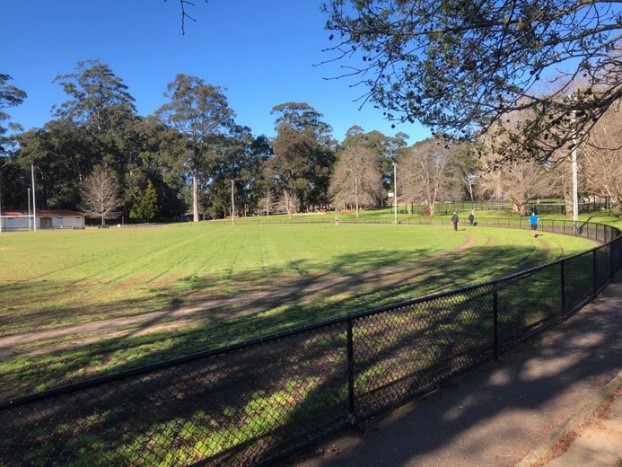
Urban tree canopy
A common method for determining the amount of urban tree canopy is to measure the area of canopy as a percentage of total land area. The measures of tree canopy cover rely on aerial surveys. Ground surveys are needed to confirm the adequacy of vegetation cover.
The guide lists the many health, economic (property values) and environmental benefits of urban tree canopy. However, there is no definition of a tree. In local streets many species that are capable of growing to a size large enough to provide shade have been pruned savagely to provide space for powerlines.
The guide outlines indicative targets to improve tree canopy cover in Greater Sydney and regional urban areas including areas of major infrastructure such as transport. This has been the subject of detailed scientific research. Many cities have already adopted new canopy targets. For example, Melbourne aims to increase from 22% (2017) to 40% by 2040 and London from 20% (2008) to 30% by 2050. The indicative targets in the guide are to increase the canopy over Greater Sydney by 2056 to the following levels.
- CBD >15%
- medium to high density residential >25%
- low density residential >40%
The implementation of these targets will require major changes to state and local government planning policies and public recruitment to help look after the trees. We need to overcome the trend to remove all the trees and substantial shrubs when a house is demolished and replaced by a larger dwelling. Usually the well-established garden is replaced with neat hedges, lawn and paving. The bird habitat and connectivity is vanishing.
Bushland and waterways
The section on bushland and waterways defines strategies for improving the quality and quantity of natural habitat in urban areas. There are lists of desirable planning actions that will conserve, restore and create ecosystems as urban areas are planned, constructed and maintained. It is stated that the approach adopted recognises the important role of integrating nature into urban areas and the lives of people, not just protecting selected sites and landscapes. Examples are:
- establish threshold levels for ecological communities beyond which no further development can be considered
- review planning policies that conflict with the provision of urban habitat and corridors, and devise triggers to switch off incompatible policies, or incorporate provisions to avoid incompatible outcomes in core, transition, and corridor areas in consultation with local government
- incorporate consideration of threatened species, endangered ecological communities, locally rare species, core bushland, and strategic linkages to maximise biodiversity conservation
The key recommendation for councils to prepare a strategic urban biodiversity framework is very good but the practicality of applying priority to urban bushland improvement at the same time as meeting the demands for development to meet population growth expectations is challenging.
We are concerned about the emphasis placed in the design guide on the use of bushland for creating linkages. This reflects the unresolved conflict between the demand to use bushland for recreation and the needs of conservation.
Nevertheless the draft design guide sets out a thorough set of principles and actions to ensure that our bushland and native habitats are preserved and improved. Unfortunately, it is not clear that government policies and funding will allow the objectives to be met.
1080: A Weighty Ethical Issue
 We are all aware of the impact that the use of 1080 poison has had on the local population of feral cats and foxes. We now have a lot more wildlife in the suburbs that may be a delight or may be a nuisance, for example brush turkeys. It is being used extensively in bushfire affected areas to help wildlife recovery. It has the advantage that baits can be dropped into remote areas. It is generally believed that native animals are immune to this poison as it is present in a range of Australian plants.The has released a report, 1080: A Weighty Ethical Issue that looks at the ethical considerations of using 1080 to control feral animals in Australia and finds that the conservation benefits to native species necessitates its use until an alternative is available
We are all aware of the impact that the use of 1080 poison has had on the local population of feral cats and foxes. We now have a lot more wildlife in the suburbs that may be a delight or may be a nuisance, for example brush turkeys. It is being used extensively in bushfire affected areas to help wildlife recovery. It has the advantage that baits can be dropped into remote areas. It is generally believed that native animals are immune to this poison as it is present in a range of Australian plants.The has released a report, 1080: A Weighty Ethical Issue that looks at the ethical considerations of using 1080 to control feral animals in Australia and finds that the conservation benefits to native species necessitates its use until an alternative is available
Here is the ISC’s summary from the report.
1080 – sodium monofluoroacetate – is very important for conservation in Australia, used extensively to protect rare native species from foxes, cats, pigs and rabbits. But many people oppose its use because it is regarded as inhumane.
In this report the Invasive Species Council considers the conservation and welfare consequences of 1080 baiting. We do this as an environmental organisation whose mission is to strengthen protection for Australian species from harmful introduced species, but also as people who care about the welfare of animals, whether introduced or native.
Diagnosing pain and distress in animals is difficult, and there is much uncertainty about the welfare impacts of 1080 poisoning, because the extent to which animals are conscious during some of the worst symptoms is unknown. However, it seems highly likely that 1080-poisoned animals suffer pain and distress before they become unconscious, although the extent and duration are highly variable and poorly understood. A 2010 assessment by an independent expert panel in New Zealand concluded that 1080 had severe to extreme impacts on the welfare of the species assessed (including cats, pigs and rabbits) lasting from hours to days.
1080 has been essential for enabling the survival or recovery of many threatened species and their reintroduction to sites where introduced predators have been suppressed or eradicated.
The use of 1080 also has welfare benefits for native animals who are freed from the pressure of heavy predation or competition by introduced animals. A ban on 1080 without an effective replacement would overall result in greater suffering (as well as declines in native species).
As a high priority, we recommend research into effective replacements for 1080 that are more humane. Four new more-humane baits have been approved in Australia since 2016, but they cannot totally replace 1080 due to their nontarget impacts and limited delivery options.
The ISC believes that an ethical approach to the welfare problems of 1080 requires the following:
- Develop and deploy more-humane and effective ways of controlling harmful introduced animals
- Design long-term control programs that minimise the overall extent of killing of introduced animals – for example, by eradicating or substantially suppressing their populations, and by intervening ecologically to help native animals withstand invasive pressures
- Improve monitoring to ascertain whether 1080 baiting (and other methods) achieve conservation goals and are cost effective (it is unethical to kill animals if no conservation benefit is achieved and wrong to waste scarce conservation funds)
- Strive to better understand (where feasible) the welfare consequences of 1080
A Viral Witch Hunt
It has been a bad decade for bats. Prior to the emergence of COVID-19, they were already in severe decline worldwide. Now, they are blamed as the culprids behind one of the costliest pandemics in modern history, even though the source and method of transmission haven’t been identified. Although scientists have an obligation to promptly disclose new threats, premature speculation about bats has been exaggerated in attention-grabbing media headlines. The result has been needless confusion, leading to the demonization, eviction, and slaughtering of bats even where they are most needed.
As of mid-March, ‘patient zero’ for COVID-19 still had not been found, and who or what infected that person remains a mystery. There is even uncertainty about whether the viral jump from an unknown intermediate host to humans occurred in the location initially identified, an animal and seafood market in Wuhan, China. Despite these uncertainties, the media, with no small assistance from scientists, has sensationalized the risks, often without providing perspective, settling on bats as the likely culprit and thus making them targets in a viral witch hunt.
Around the world, bats are feeling the effects of this misinformation. My Malaysian colleague, Sheema Abdul Aziz, has spent years documenting the key role of flying fox bats as essential pollinators of Southeast Asia’s multibillion-dollar-a-year durian crop. Growers were planning to join her in a public education campaign explaining the value of bats, but now they fear a public backlash and are reluctant to support her efforts. A local resort has expressed fear of loss of sales due to a nearby flying fox colony. Fearing her research will trigger a new disease outbreak, private citizens have even asked the government to stop her from handling bats and to support eradication, something already reported in neighboring Indonesia. My colleagues in China are also deeply concerned about the demonization of bats and calls for their eradication.
Even in my home city of Austin, Texas, where we have safely enjoyed sharing a downtown bridge with 1.5 million bats for decades, growing numbers of people are asking about disease risks. Despite warnings from poorly informed health officials that our bats were rabid and dangerous, they’ve yet to transmit a single case of disease. They simply attract millions of tourist dollars each summer and control tons of crop pests each night. Texas bats are worth more than a billion dollars annually. Now bat-lovers are experiencing a backlash against putting up bat houses because neighbors say they fear that attracting bats will bring disease.
But simply telling people that bats are valuable and shouldn’t be killed can’t counter panic. I have personally investigated instances where fearful humans had burned, poisoned, or sealed caves, killing millions of bats at a time. Based on my experience, I have concluded that there is no greater threat than the intolerance and eradication that results from misguided fear.
Exaggerated warnings of bat disease risks aren’t just misguided. They threaten the health of entire ecosystems and economies. Researchers in Indonesia conservatively estimate that bats save cacao growers more than $700 million annually in avoided insect damage. In Mexico, tequila and mescal production worth billions annually relies on bats that pollinate agaves. From Southeast Asia to the Mediterranean, bats provide key pest control for rice growers. In South Africa, macadamia growers benefit from bat control of stink bugs.
Despite a long tradition of being misunderstood and feared, perhaps because of their nocturnal habits and erratic flight, bats have an outstanding record of living safely with humans. Millions living in backyard bat houses, city parks, and bridges have proven to be safe neighbors. I have never been attacked and am still healthy after more than 60 years studying and handling hundreds of species worldwide, sometimes surrounded by millions in caves. Because, like veterinarians, I am occasionally bitten by unfamiliar animals I handle, I’m vaccinated against rabies.
For anyone who simply avoids handling bats, the odds of contracting any disease from one are incalculably small. All diseases attributed to bats are easily avoided, even when bats live in one’s yard.
However, these facts typically go unreported, while risks are often magnified. The March 11 issue of Scientific American provides an excellent example. Its COVID-19 article subhead reads:
Wuhan-based virologist Shi Zhengli has identified dozens of deadly SARS-like viruses in bat caves, and she warns there are more out there.
The use of ‘deadly’ is unjustified speculation.
The article additionally claims that the Wuhan outbreak is the sixth outbreak caused by bats in the past 26 years. In fact, the first four listed (SARS, MERS, Hendra, Ebola) appear to have been transmitted to people by animals other than bats—yet bats still receive primary blame. The fifth, the Nipah virus, which likely is spread to people from flying fox bats, is easily prevented by simply covering collection containers or pasteurizing contaminated palm juice.
Two possible scenarios have been hypothesized for the COVID-19 outbreak. The first is that a new coronavirus entered an intermediate host animal, such as a pangolin, where it evolved over an undetermined period to gradually become a threat to people. Alternatively, the new coronavirus could have been harmless when it first entered humans, but over time evolved to become virulent. Such scenarios would be difficult to predict, and a publication currently under review even points to mice and domestic pigs as possible sources.
So why has the media almost universally blamed bats? In part because scientists have disproportionately focused on sampling them.
Since 2005, when coronaviruses in horseshoe bats were first hypothesized to be the ancestors of the coronavirus that caused SARS, bats have received far more scrutiny than any other group of animals. For example, in the study on which the scariest headlines were based, researchers sampled nearly twice as many bats as rodents, shrews, and nonhuman primates combined and didn’t even include carnivores or ungulates.
Easily blamed, due to their lack of popularity, bats are also the easiest mammals to quickly sample in large numbers. This led to rapid publication of the results, and sensational speculations were deemed more acceptable when focused on already-feared animals.
Not surprisingly, more viruses have been found in bats than in less-surveyed species, so biased speculation has become a self-fulfilling prophecy. We don’t yet know if bats have more viruses than other animals because we haven’t similarly sampled others. And even if bats do have more, the number of viruses isn’t necessarily indicative of transmission risk. Many viruses are innocuous or possibly even beneficial.
Some virologists have capitalized on the fear of pandemics to promote funding for viral surveys in nature as a possible means of preventing or mitigating these scary events. They convinced the US National Institute of Allergy and Infectious Diseases to budget $4.8 billion in 2019 for surveys searching for potentially high-risk viruses. Referring to the COVID-19 pandemic, long-time surveying proponents now argue that the best way forward is to prevent future outbreaks by beginning with surveys to find and catalog wildlife viruses globally, focusing on what they consider to be high-risk animals, including bats.
However, many leading experts strongly disagree. They argue that such surveys would be extremely costly and have little practical value. Viral-caused outbreaks are exceedingly rare, and their emergence is unpredictable. The evolutionary virologist Edward Holmes and associates note that even if all current viruses could be catalogued, new variants of RNA viruses are constantly evolving. They bluntly warn of arrogance and loss of credibility resulting from promises that viral surveys could prevent or even mitigate pandemics.
To understand why surveying will fail as a strategy, consider the examples of MERS, West Nile, and Zika viruses. MERS jumped to humans from a seemingly unlikely source, camels, in Saudi Arabia, previously believed to be an extremely improbable location for such an incident. Robert Tesh, an expert on emerging viruses, has pointed out that neither West Nile nor Zika viruses are new. They simply spilled over when transported to new areas in incidents that couldn’t have been predicted.
A growing number of leading epidemiologists agree that it isn’t possible to predict the animal origin of the next viral outbreak. Unfortunately, their warnings are seldom covered by public media. When they are, they tend to be de-emphasized.
Finding the true source and means of infection for patient zero in the current outbreak seems far more important than condemning bats or spending billions on searches for potential pathogens. Such public health funds would be much better directed toward improved early detection in humans.
But we humans must also address our own culpability. Caging and slaughtering a wide variety of animals in markets virtually guarantees the spread of viral infections. Blaming already unpopular bats only increases already severe threats to their survival, despite scientific certainty about the enormous benefits they provide to both the environment and societies. Care about bats or not, we should see COVID-19 as a grim reminder that human well-being requires responsible stewardship of nature, not just dominance.
This article was written by Dr Merlin Tuttle, a leading bat researcher who founded and directed Bat Conservation International for 30 years. He now directs Merlin Tuttle’s Bat Conservation and is a research fellow in the Department of Integrative Biology at the University of Texas at Austin.
Australia has Failed Miserably on Energy Efficiency – and Government Figures Hide the Truth
Amid the urgent need to slow climate change by cutting greenhouse gas emissions, energy efficiency makes sense. But as Australia’s chief scientist Alan Finkel last week warned, we’re not 'anywhere close to having that nailed'.
Energy efficiency means using less energy to achieve the same outcomes. It’s the cheapest way to cut greenhouse gas emissions and achieve our climate goals. Improving energy efficiency is also vital to achieving so-called 'energy productivity' – getting more economic output, using the same or less energy.
But Australia’s national energy productivity plan, agreed by the nation’s energy ministers in 2015, has gone nowhere.
It set a goal of a 40% improvement in energy productivity by 2030. But my analysis, based on the most recent official data, shows that in the three years to 2017-18, energy productivity increased by a mere 1.1%.
Clearly, there is much work to do. So let’s take a look at the problem and the potential solutions.

Energy efficiency: a low-hanging fruit
Better energy efficiency lowers electricity bills, makes businesses more competitive and helps manage energy demand. Of course, it also means less greenhouse gas emissions, because fewer fossil fuels are burnt for energy.
Business, unions and green groups recognise the benefits. Last month they joined forces to call for a sustainable COVID-19 economic recovery, with energy efficiency at the core, saying:
In Australia, a major drive to improve the energy efficiency of buildings and industry could deliver over 120,000 job-years of employment […] Useful upgrades could be made across Australia’s private and public housing; commercial, community and government buildings; and industrial facilities.
The group said improvements could include:
- more efficient and controllable appliances and equipment, especially for heating and cooling
- improved shading and thermal envelopes (improving the way a building’s walls, ceiling and floors prevent heat transfer)
- smart meters to measure energy use
- distributed energy generation and storage, such as wind and solar backed by batteries
- fuel switching (replacing inefficient fuels with cleaner and economical alternatives)
- equipment, training and advice for better energy management.
The International Energy Agency (IEA) has suggested other measures for industry and manufacturing, such as:
- installing more efficient electric motors
- switching from gas to electric heat pumps
- more waste and material recycling.
And in transport, the IEA suggests incentives to get older, less efficient cars off the roads and encourage the uptake of electric vehicles.
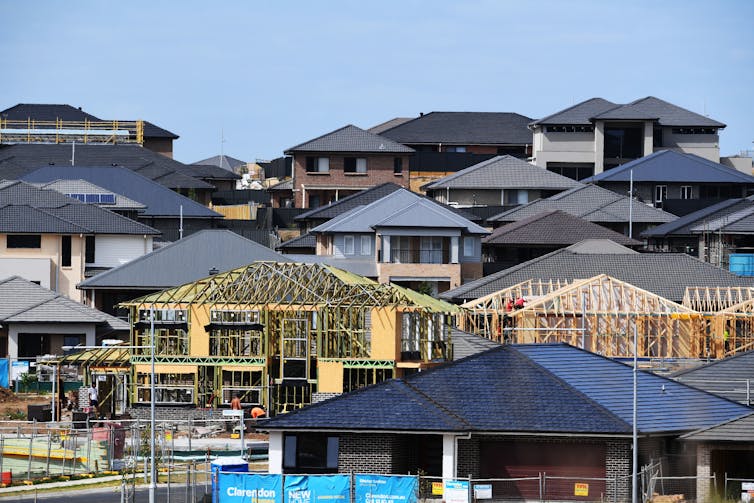
Governments’ sleight of hand
In 2018 the IEA observed:
the power sector will be at the heart of Australia’s energy system transformation […] International best practice suggests that both energy efficiency and renewable energy are key drivers of the energy transition.
Since then, renewable energy’s share of the electricity mix has increased. But energy productivity has stalled.
To understand how, we must define a few key terms.
Primary energy refers to energy extracted from the environment, such as coal, crude oil, and electrical energy collected by a wind turbine or solar panel.
Final energy is the energy supplied to a consumer, such as electricity delivered to homes or fuel pumped at a petrol station.
A lot of energy is lost in the process of turning extracted primary fuels into ready-to-use fuels for consumers. For example at coal-fired power stations, on average, one-third of the energy supplied by burning coal is converted to electricity. The remainder is lost as waste heat.
Until 2015, Australia and most other countries used final energy as a measure of how rapidly energy efficiency was improving. But the national productivity plan instead set goals around primary energy productivity – aiming to increase it by 40% between 2015 and 2030.
This has made it possible for governments to hide how badly Australia is travelling on improving energy efficiency. I analysed national accounts figures and energy statistics, to produce the below table. It reveals the governments’ sleight of hand.
Over the three years from 2014-15 to 2017-18, final energy productivity increased by only 1.1%, whereas primary energy productivity increased by 3.5%.
The reduced primary energy consumption is mostly due to a large increase in wind and solar generation. The efficiency of energy used by final consumers has scarcely changed.
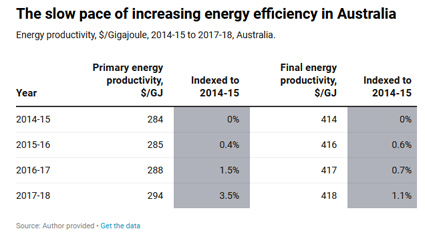
A sustainable future
The lack of progress on energy productivity is not surprising, given governments have shown very little interest in the issue.
As Finkel noted in his address, Australia’s energy productivity plan is absent from the list of national climate and energy policies. The plan’s 2019 annual report has not been released. And those released since 2015 have not monitored progress in energy productivity.
What’s more, the plan makes no mention of previous similar agreements, in 2004 and 2009, to accelerate energy efficiency with regulation and financial incentives. Since 2013, almost all Commonwealth programs supporting those agreements have been de-funded or abolished, and many state programs have also been cut back.
The IEA’s sustainable recovery plan, released last week, outlined what a sustainable global economic recovery might look like. In particular, it said better energy efficiency and switching to more efficient electric technologies will deliver triple benefits: increased employment, a more productive economy and lower greenhouse gas emissions.
In this carbon-constrained world, relatively easy and cheap opportunities such as energy efficiency must be seized. And as Australia spends to get its post-pandemic economy back on track, now is the time to act.![]()
Hugh Saddler, Honorary Associate Professor, Centre for Climate Economics and Policy, Australian National University
This article is republished from The Conversation under a Creative Commons license. Read the original article.
Recognition of the Work of Bill Jones and Noela Kirkwood
On Thursday morning 18 June the Friends of Lane Cove National Park held a special celebration at Carter Creek to celebrate the retirement of Bill Jones and Noela Kirkwoods, as coordinators of the Quarry Creek bushcare site. Bill and Noela have been with Friends from the beginning – in fact from before the beginning. They attended the inaugural bushcare breakfast meetings in 1991, which later led to establishment of Friends of Lane Cove National Park after the 1994 fires.
They both have given so much more to the environment than bushcare. Both helped to educate a generation of new volunteers; Noela through her association with TAFE and Bill with the walks and talks program organised by the Australian Plant Society at Ku-ring-gai Wildflower Garden. They were involved in preserving Wallumatta Nature Reserve, one of the largest remaining areas of Sydney Turpentine Iron Bark Forest as part of Lane Cove National Park. They have been enthusiastic regenerators on Ku-ring-gai Council sites and keenly pursued grants from council to support their work.
Of course, Bill and Noela have been actively involved with STEP since we merged with KUBES (Ku-ring-gai Bushland and Environment Society) in 1998 have a passionate interest in Ku-ring-gai Council’s bushland management. Bill was a committee member from 1998–2001 and has led some of our walks.
Photo is of Noela and Bill at STEP’s 20th anniversary in 1998
Great Southern Bioblitz: A Massive Citizen Science Project
In April this year an international citizen science bioblitz event was held. Volunteers from all over the world recorded flora and fauna sightings from their neighbourhood in the City Nature Challenge. This event was organised from the USA so the timing was set for the spring in the northern hemisphere.
But the peak time for nature in the southern hemisphere is spring. So the Australian organisers of the City Nature Challenge are coordinating a Great Southern BioBlitz, or GSB for short, from 25 to 28 September. Countries in the Southern Hemisphere have now joined in. There will be an international period of intense biological surveying in an attempt to record all the living species within several designated areas across the Southern Hemisphere in spring.
The GSB will run through the online citizen science platform iNaturalist. All you need to do is download the iNaturalist AU app and start observing. Recordings are made by uploading photos or sound recordings. It is also possible to record observations via your computer.
Projects for many areas are being created using the platform. The purpose of area projects is to gather separate data of the numbers of observations and species for different locations. A project has already been set up for the Greater Sydney region. You don’t need to record your sightings under this region. This will happen automatically when you record observations with their geographical location.
Survey of People’s Connection with Nature
A group of researchers from Macquarie University are currently conducting a national online survey that aims to examine people’s connection with nature by engaging with outdoor environments (such as gardens, local parks, natural reserves etc) and how this is related to the importance they place on such activities. They also want to examine whether their attitude has changed since the bushfires and COVID-19 and whether people’s connections with nature are related to their physical and mental health.
You are invited to complete the survey. It takes between 20 to 30 min to complete online and is anonymous. There is an additional (opt in) follow-up interview component of this study.

